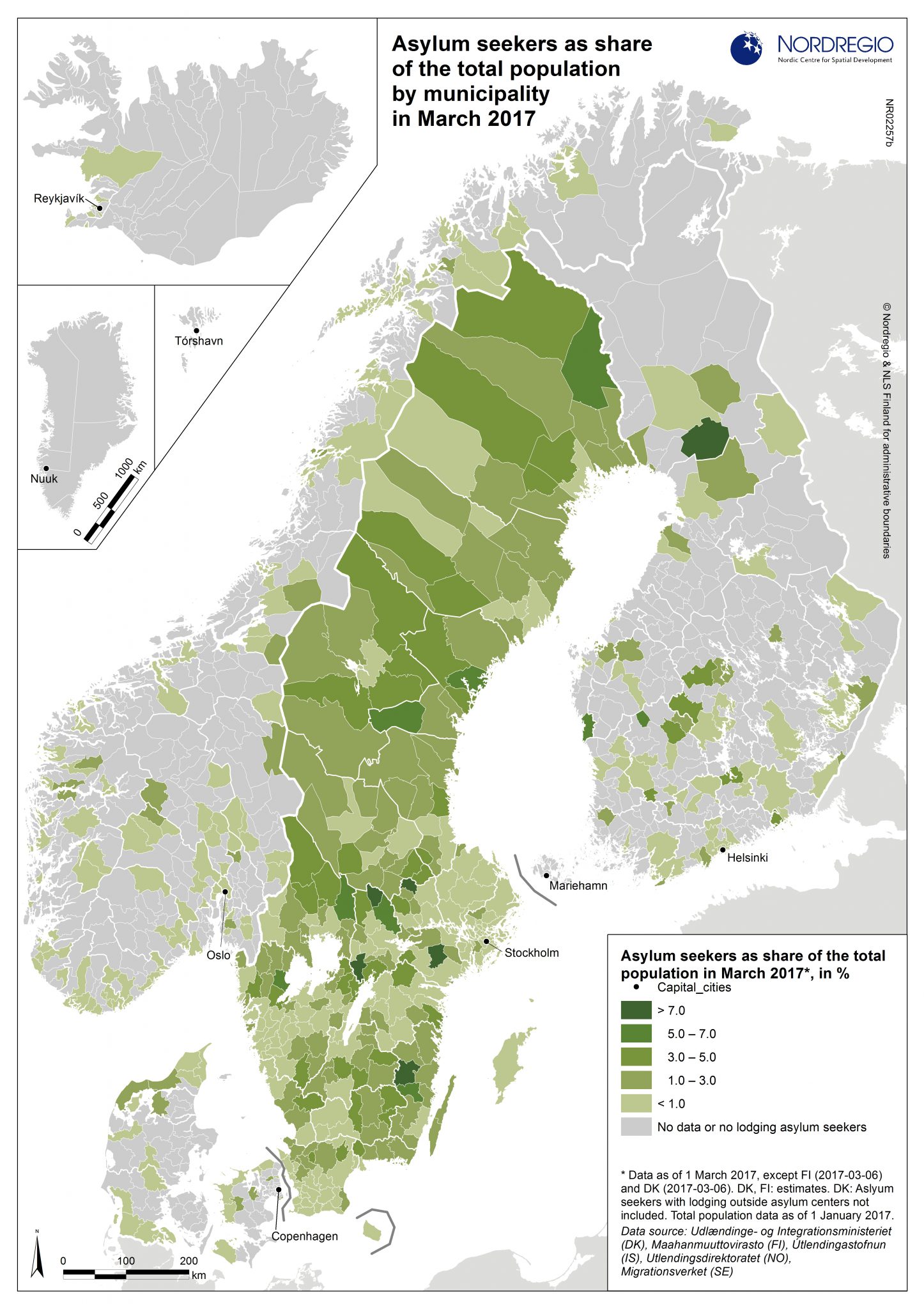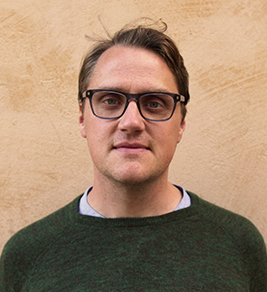By municipality in March 2017

The distribution of refugees is of growing interest in the Nordic Region due to both unprecedented in-flows of migrants, and demographic challenges relating to depopulation in many rural areas. Rural municipalities are increasingly recognising the important contributions these newcomers can make to local communities and are pursuing policies that encouraging them to stay.
The map shows that, in March 2017, Swedish municipalities had a high share of asylum seekers per total population when compared to other Nordic municipalities. This is partly a result of the higher overall numbers of asylum seekers in Sweden at this time, but also reflects a policy approach that requires all Swedish municipalities to host asylum seekers. In other Nordic countries (e.g. Finland, Denmark and Iceland), asylum seekers are concentrated in a smaller number of municipalities corresponding with the locations if the country’s asylum centres.
In Denmark, the highest shares of asylum seekers per total population, above 1%, were found in rather peripheral municipalities in North-Western Jutland – Thisted, Jammerbugt and Vesthimmerlands kommune – as well as in four municipalities in Zealand, namely Sorø, Lejre, Allerød and Dragør. In Finland, more than a dozen of municipalities had shares of asylum seekers per total population above 1%, with the highest shares, above 5%, in Ranua in the Lapland region, followed by Kristiinankaupunki on the west coast in Österbotten, as well as Kihniö, Pirkanmaa. In Iceland, asylum seekers are housed in municipalities in, or close to, the capital region, but, even here, numbers are small in the context of the total population (<0,98%).
In Norway, refugee populations are similarly contained to municipalities with asylum centres. The number and distribution of centres is greater than in Denmark and Finland however, resulting in the presence of asylum seekers in more municipalities but in lower numbers (in most cases <1%).


